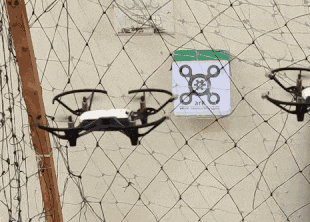
An Indian engineer taught two serial drones to dock using only the built-in camera and magnets on the frame. The camera allows the active drone to track the second drone, and magnets attract drones to each other at a distance of several centimeters.
Usually, small civilian drones are used separately, but in recent years, engineers have proposed using a lot of drones as a single group. For example, drone shows are becoming popular, in which hundreds and even thousands of drones move synchronously, forming inscriptions or other massive objects in the air.
According to nanonews.net, the carrying capacity of conventional drones is usually small, but a large number of multicopters are potentially capable of lifting heavy loads together. However, for this, the drones should be nearby, but at the same time not to interfere with each other due to the arising air currents from the screws, and also synchronize their movements. This is potentially the most convenient way to do this with the help of a mechanical coupling, but so far almost all studies with such drones have been based on improvised drones with massive frames, and they have also demanded to track the movements of devices using a stationary external camera system.
Mohit Singh, a student at the Indian Institute of Technology in Kharagpur, proposed and implemented a simpler scheme. He took two serial DJI Tello drones as the basis, and their case is not modified, with the exception of two magnets on the protective elements around the screws, as well as a glued matrix code on one of the drones, which plays a passive role. The active drone monitors the position of the tag and moves in the air so that it is directly in front of it, and then begins to move forward.
Magnets forgive a small error in the centering of the drone, because even with a slight mixing vertically or horizontally, the drones are still attracted to each other at a distance of several centimeters and form a single multi-copter.
It is worth noting that this docking method, like the previous analogs, has a significant drawback: after connecting, the drones can no longer trip on their own due to too strong attraction between the magnets.
© All rights reserved. Citing to www.ict.az is necessary upon using news





